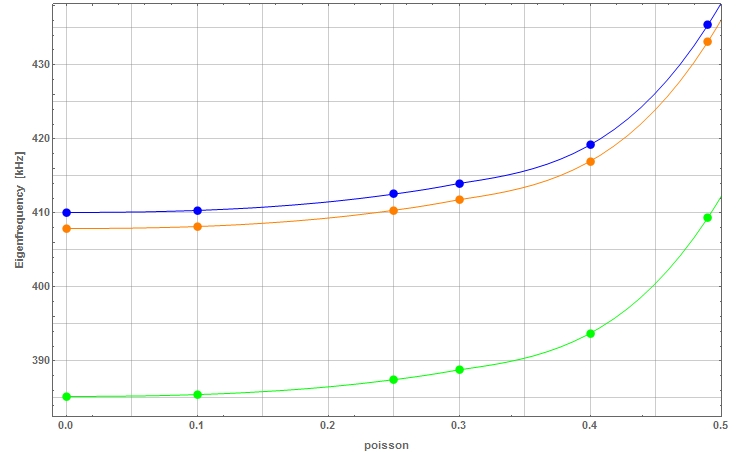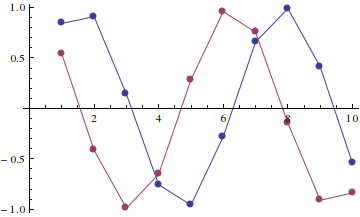I have some data I need to plot smoothly. I am using ListPlot and Joined; to make them smooth, I found I need to use InterpolationOrder->3; then, to have only markers on the data set, I am using Mesh->Full, but I get some weird behavior. Colors of markers are only blue and a part of the third curve vanishes. How do I get markers with colors of the curve, different for each curve?
Z00 = {{0.`, 410.07215877001596`}, {0.1`, 410.346099148169`}, {0.25`,
412.554711875091`}, {0.3`, 414.003252267871`}, {0.4`,
419.207372319724`}, {0.49`, 435.436031631739`}};
Z006 = {{0.`, 407.90130077490403`}, {0.1`,
408.17433459836303`}, {0.25`, 410.370028165589`}, {0.3`,
411.81120194816503`}, {0.4`, 416.99501296245097`}, {0.49`,
433.178028406407`}};
Z002 = {{0.`, 385.219627658663`}, {0.1`, 385.47437566168`}, {0.25`,
387.49055954758103`}, {0.3`, 388.83276041643103`}, {0.4`,
393.75318408081097`}, {0.49`, 409.415785093289`}};
ListPlot[{Z00, Z006, Z002}, PlotMarkers -> {Automatic, 10},
Joined -> True, Mesh -> Full, InterpolationOrder -> 3,
PlotRange -> All,
GridLines -> All, ImageSize -> {1000, 600}, Frame -> True,
FrameLabel -> {"poisson", "Eigenfrequency [kHz]"},
LabelStyle -> Directive[FontWeight -> "Bold", FontSize -> 14]]




